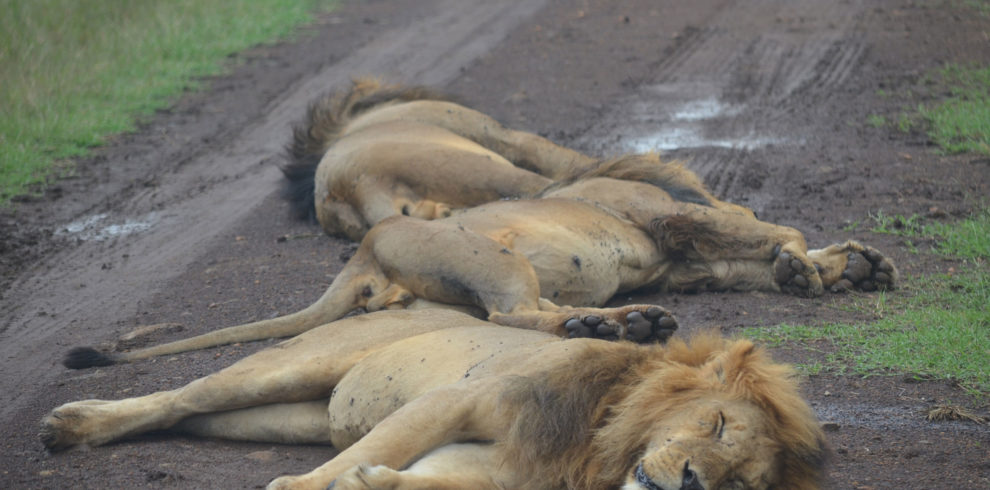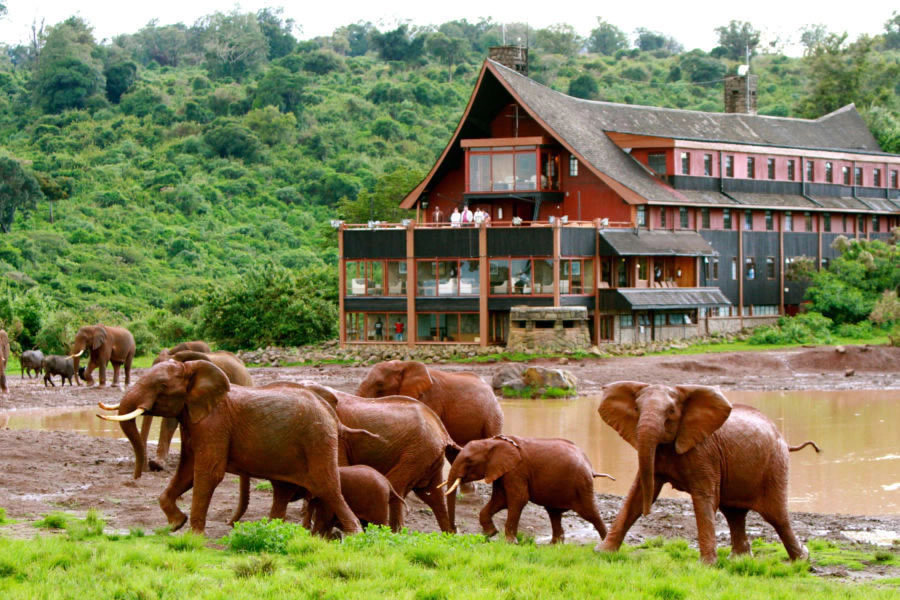The Aberdares and The Aberdare National Park
Most wildlife reserves in Kenya are all about semi-arid plains, savannahs and sun-scorched hills. Not the Aberdare National Park, though. The reserve paints a stunning masterpiece of what the other side of the country looks like. It’s all lush green lands, awe-striking waterfalls and nice, cool weather. The national park measures 765.7 sq. Km, and is located in Kenya’s central highlands.
The Aberdares contribute heavily to the magnificent mountain views this reserve provides. Stretching approximately 100 Km north-south of Nairobi and Thompson Falls, the Aberdares are a volcanic range resting on the eastern wall of the rift valley. The range supports a majority of the country’s Afro-alpine moorland and Afro-montane forest. It also contributes to the majority of the heights in the reserves. Thanks to the Aberdares, the region enjoys cool mountain breezes and a misty atmosphere that shrouds the entire park in mystery.
Wildlife
One thing you can count on in any Kenyan reserve is the presence of diverse wildlife, and the Aberdares are no different. The mountain range provides an ideal habitat for a wide category of large and small mammals. With the thick rainforest, visitors can half expect a buffalo or elephant to materialize out of nowhere. Over 2,000 elephants live in the Aberdares, and the range has Kenya’s second-largest black rhino herd. Other animals that populate the park include lions, warthogs, spotted hyenas, leopards, and baboons.
Another unique sell of the Aberdare National Park is the opportunity for a rare sighting or two. The range creates the perfect habitat for a few vulnerable or endangered species. It’s one of the few places on the continent where you can find the black leopard. The Aberdare National Park boasts one of the two surviving populations of the mountain bongo – a giant forest antelope, now critically endangered, that lives in the bamboo forest. Other unique sightings include the African golden cat, giant forest hog, blue duiker, serval cat, and African civet cat.
Bird watchers have over 290 species to pique their interests. With its cool and wet climate, the Aberdare range suits a host of bird species, including the regionally endemic Jackson’s francolin and the critically endangered Aberdare Cisticola. Goshawks, sparry hawks, and plovers are some of the options you can expect to see here. If you love butterflies, then the Aberdare National Park is a real find. The beautiful creatures populate the park, from the moorlands to the forest.
The Waterfalls
Some of the Aberdares’ best features are the waterfalls that punctuate the sights and sounds in the park. The glorious Karuru waterfalls are the main attraction. The cascade in three steps; the first is 117 M, the second 26 M, and the third 130 M. The park also offers the beauty of Chania waterfalls and several other smaller ones. For photographers, the waterfalls in the Aberdares combined with the wild moorlands, permeating mist, mossy forest, and mountainous terrain create a dream background.
The Aberdare National Park is also famous for the Treetops Lodge. Besides being a stunning treehouse that provides spectacular views, it’s internationally known as the place where the then Princess Elizabeth learned about her father’s death in 1952, making her the queen of England. The Ark Lodge, a beautiful wooden structure shaped like Noah’s ark, is another popular lodge in the Aberdares. It grants guests views of the largest saltlicks in the Aberdares where various animals stop. Both lodges allow nighttime game viewing.
Most people visit the Aberdare National Park for game viewing, but that’s not all you can do while here. Camping is one activity that allows visitors to get the best of the region. The moorlands set the perfect stage for a night of adventure. If you prefer to enjoy the mountain ranges during the day, then a picnic is always an option. For guests who like to get some action while seeing the sights, the reserve is suitable for trekking and hiking. However, hiking is only possible in selected areas, and with supervision. The rivers in the park provide decent fishing opportunities, even though the aquatic life is not what it used to be.
The Aberdare National Park is open around the year, but January and February; June through September are the peak seasons. Accessibility is difficult during the rainy season (March through May).






